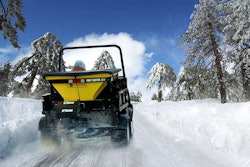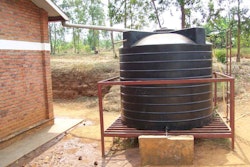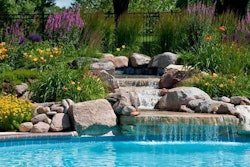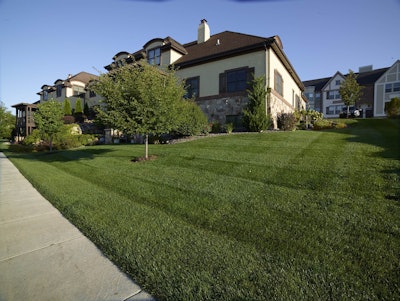 For lush, weed-free lawns like this, landscapers have to be proactive and apply pre-emergent herbicides.
For lush, weed-free lawns like this, landscapers have to be proactive and apply pre-emergent herbicides.Photo: Dow AgroSciences
Being proactive is always preferred over responding after a problem appears, and this is why applying pre-emergent herbicides is such an important feature of any lawn-care provider’s business.
No one wants weeds in their yard, and the best way to go about eliminating them is to prevent them from growing in the first place. This is where pre-emergent herbicides come into play.
“Basically what they do is inhibit root growth, so the roots cannot expand once they come in contact with the herbicide,” said Dan Loughner, a field scientist for Dow AgroSciences Turf and Ornamental. “It stops the roots from growing essentially.”
Because pre-emergent herbicides aren’t killing the weeds but simply shutting down cell division so they can no longer grow, there is a limited window of time to apply these chemicals so they can take effect before the weed germinates.
The general rule of thumb about when to spray or spread a pre-emergent is to apply the chemical two or three weeks prior to the emergence of the targeted weed. Crabgrass is the most common weed targeted and it tends to germinate when the soil temperature has been above 50 degrees for several days.
So, now that you know when, how do you decide what product to use and in what form to apply it?
In the end, it comes down to personal preference, but here’s a look at some of the well-known labels out there and what the experts have to say about them.
Dow AgroSciences products
Dow AgroSciences has five different pre-emergent products that landscapers can choose from depending on their needs.
For landscapers looking for flexibility in both application method and when they can apply, Dimension (dithiophyr) boasts of post-emergence control as well as typical pre-emergent properties.
 Dan Loughner
Dan Loughner“If they miss that opportunity or if they get a real warm spring and the crabgrass starts to germinate, Dimension gives them the opportunity to continue to make applications in the middle of May, late May, when the crabgrass is just germinating up to about what we call tiller stage – about five leaves on the crabgrass plant – and it will control it,” Loughner said.
Dimension comes in both liquid and granular form. While it was originally designed to take out crabgrass, which is still Dimension’s major market, it’s also effective against 45 other broadleaf and grassy weeds.
“You know, you get some early germination along the driveways, along sidewalks, and those areas are always prone to have more crabgrass, so that’s an advantage of having a product like Dimension,” said Jamie Breuninger, technical leader for Dow AgroSciences Turf & Ornamental.
The company’s Team herbicide (benefin and trifluralin) comes only in granular form. It can be applied along with fertilizer, but it does not have the post-emergent properties of Dimension. Team can be used to control crabgrass, barnyard grass and spurge, to name a few, in both established cool-season and warm-season grasses.
For those looking for long-lasting broadleaf weed control that can be used in ornamental beds, Breuninger suggests using Gallery (isoxaben), which can be sprayed.
And Loughner adds: “Gallery also has the widest label for safety to ornamental plants. It’s over 500 plants listed it can be used around. That’s a really strong benefit because you don’t know what a homeowner is going to have in their beds.”
Smaller landscaping companies that don’t have spraying equipment and are only treating a few homeowners’ beds can opt for the granular version known as Snapshot (trifluralin and isoxaben).
 Jamie Breuninger
Jamie Breuninger“The advantage of a granule is that it’s ready to use,” Breuninger said. “There’s no mixing required and a lot of people use Snapshot when they’re putting their mulch out. You can spread the Snapshot and put the mulch right on top of it and that’s the incorporation you need.”
The important thing to remember when using Snapshot or Gallery in beds is that they are pre-emergent herbicides and will have no effect on a bed that is already full of weeds.
The last and newest product is Defendor (florasulam) and it has the ability to control winter annuals such as dandelion, clover and chickweed while the temperatures are still cold. It comes as a liquid and can be mixed with Dimension. In fact, this is the first year it has been sold by itself; previously, it was available only in a value pack with Dimension.
“Customer feedback has been very, very positive,” Breuninger said. “It’s new technology to them; they’ve never seen anything like it, and quite frankly, we have been thrilled with the performance.”
Syngenta products
The most well-known pre-emergent that Syngenta offers is Barricade (prodiamine). Barricade is offered both as a flowable formulation, 4FL, and a dry granule formulation that is dissolved in water, 65WG.
According to Dean Mosdell, technical manager at Syngenta, the 4FL formulation was added after a customer requested a liquid variation, as it requires less agitation. Syngenta says landscapers that opt to use Barricade will see long-lasting pre-emergent control after one application.
“Barricade herbicide offers long residual control throughout the season,” Mosdell said, “whereas other herbicides may lose their efficacy as we move into a hot spring and early summer.”
If you’re looking for the effect of Barricade, but don’t want to pay for the brand name, Syngenta also offers Resolute (prodiamine), which is known as a fighting brand.
Those who do choose Barricade over Resolute have access to technical support and can participate in some of the programs, such as rebates, that Syngenta offers involving the brand.
It is common knowledge that pre-emergent herbicides should not be applied on seeded or newly reseeded turf, but Syngenta’s latest product, Tenacity (mesotrione), changes all that. This herbicide offers both pre- and post-emergence control by inhibiting photosynthesis in targeted plant species.
“It handles both grasses and broadleaf weeds,” Mosdell said. “The distinct advantage of Tenacity is that it can be used at seeding of grass types like Kentucky bluegrass and perennial ryegrass, tall fescue. You can control weeds at seeding so those seedlings have a chance of getting established before weed competition.”
Bayer Turf & Ornamental products
Bayer has two major pre-emergent herbicide names that come in several different formulations. The first is Specticle (indaziflam) and its formulations are FLO, Total, and G.
“Specticle offers up to eight months’ residual control at the lowest use rates on the market – up to 40 times less active ingredient than current standards,” said Jeff Michel, herbicide product manager for Bayer Turf & Ornamental. “Furthermore, its non-staining, low-odor formulation offers enhanced convenience for lawn-care operators and landscapers.”
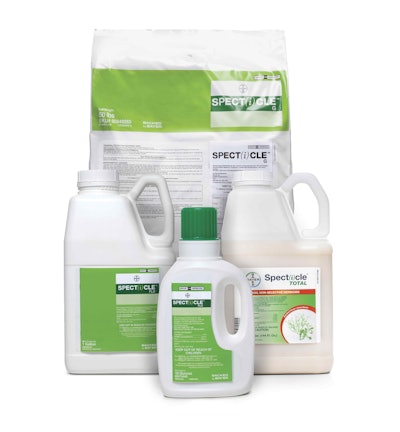 Specticle comes in a variety of formulations to take on weeds like crabgrass.
Specticle comes in a variety of formulations to take on weeds like crabgrass.Photo: Bayer Turf & Ornamental
The FLO formulation comes as a liquid and can be used to control troublesome weeds such as goosegrass, Poa annua and crabgrass. It can be used around ornamentals, mulched areas, hardscapes and warm-season grasses. As an added bonus Specticle FLO does not require a signal word (or special caution labeling). Specticle G comes as a granule and also does not need a signal word.
“Specticle G is labeled for use on turf, landscapes and hardscapes, but works best when applied as a broadcast treatment on bare ground or mulched areas around labeled ornamental plants and grasses,” Michel said.
The last variation is Specticle Total (indaziflam, glyphosate and diquat). This is a residual, non-selective herbicide that can provide up to six months of control. Released in 2014, it’s the newest variation of Specticle.
Specticle Total can be sprayed on both landscapes and hardscapes, killing existing weeds and preventing new ones from appearing as well.
“A successful two-step program for landscape bed weed control is starting with Specticle G to create a weed control barrier,” Michel said. “Step two is treating any existing weeds or escapes with Specticle Total to quickly control the weeds non-selectively and re-create the weed barrier. This program provides the residual control and quick knockdown to control landscape weeds with confidence.”
Bayer’s other pre-emergent herbicide brand is known as Ronstar (oxadiazon) and it works differently than most other products, targeting a weed’s shoots rather than its roots. The reason most pre-emergents cannot be used on newly seeded turf is that the chemical does not distinguish between the roots of weeds and the roots of other plants. Ronstar can be used around sensitive grasses without harming them.
Ronstar FLO is a flowable formulation and can be used on warm-season grasses, while Ronstar G is a granular that can be used on warm- and cool-season grasses as well as landscape ornamentals.

